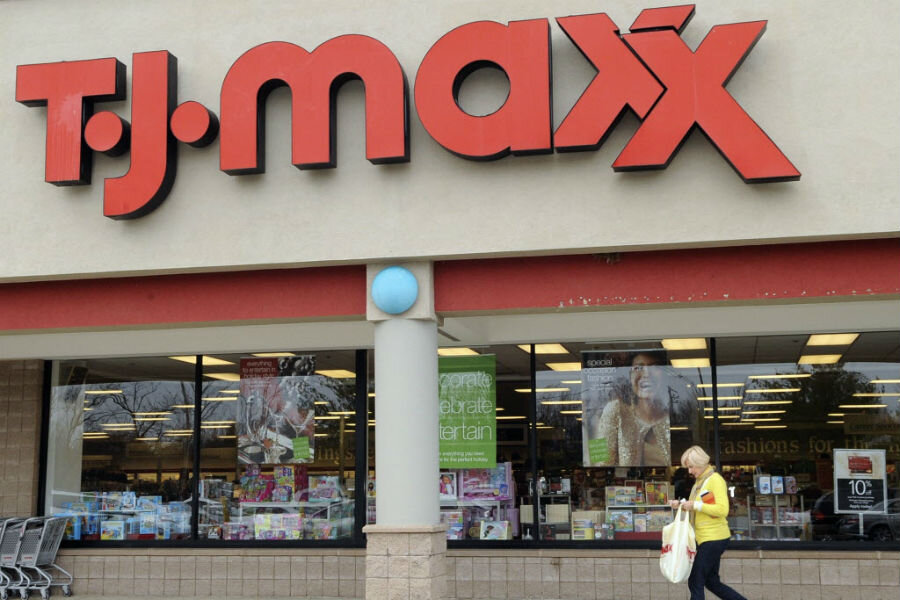TJX follows Wal-Mart minimum wage hike: Will retail industry fall in line?
Loading...
| Los Angeles
On Wednesday, retail workers who earn minimum wage got some welcome news. TJX, parent company of the T.J. Maxx, Marshalls, and Home Goods chains announced they were raising the base pay to $9 an hour.
This move followed on the heels of the decision this past week by the globe’s largest retailer, Wal-Mart, to similarly boost its entry level pay.
With some 1.3 million workers in its employ, the Arkansas giant made this week’s moves inevitable, says Scott Testa, assistant professor of business at Arcadia University near Philadelphia. “There is enough turnover in retail as it is,” he says. “If your largest competitor raises its wages, you have to follow suit.”
These moves within the retail sector come amid a growing demand for workers, increased competition from online retailers, and increased pressure from interest groups pushing for higher minimum wages. A growing number of cities and communities have raised the minimum wage locally, while others are pushing for a $15 federal minimum wage.
The pay raises suggest movement in a marketplace that has been moribund since the 2008 recession.
“We are five years out of the recession and only now are wages beginning to push upwards,” says Chris Rhomberg, associate professor of sociology at Fordham University in New York. “Those chains can’t continue to pay low wages and expect to get a stable work force,” he adds.
Analysts suggest that the twin forces of social pressure to alleviate income inequality combined with an improved economy will continue to push retailers to raise entry level pay.
“We do hope this is a trend that will continue in this sector,” says Aiha Nguyen, director of the grocery and retail project at the advocacy organization Los Angeles Alliance for a New Economy. She points out that others such as Gap have also begun raising wages.
Such moves make good business sense, says Ms. Nguyen. Retailers such as Costco and Trader Joe’s have long paid higher wages and achieved a high level of employee loyalty and workforce stability as a result. “These companies have always done very well paying higher wages,” she adds.
Some analysts regard these moves as an effort by the retailing sector to forestall federal action on minimum wages, points out Jody Knauss, senior analyst at the Center for Media and Democracy in Wisconsin.
“My concern is that this is really just an effort to legitimize the nine dollar wage,” he says, when $15 is the minimum living wage.
Indeed, whether wages will continue to rise may depend in part on these pressures to raise the minimum wage to $15. In 2015, 21 states are raising their minimum wages, which means, for the first time, more than half of states will have minimum wages above the federal minimum of $7.25 an hour.
But the National Retail Federation (NRF) suggests that higher wages will continue if the marketplace is allowed to work without government interference. In a statement, the NRF emphasized the forces behind Wal-Mart’s pay raise. NRF president Matthew Shay called it “another example of the power of the marketplace.”
According to the NRF statement, these moves should help stave off what the NRF and many businesses regard as government intrusion into the wage discussion.
“Like many other retailers, Wal-Mart made its decision based upon what is best for their employees, their customers, their shareholders, and the communities in which they operate,” he added.
Living wage advocates applaud the move, but suggest that pressure is needed to keep the raises coming.
"The decision by Wal-Mart is a good one," says Rashad Robinson, head of Color of Change, an online advocacy group. Still, he says, "Much more needs to be done."







